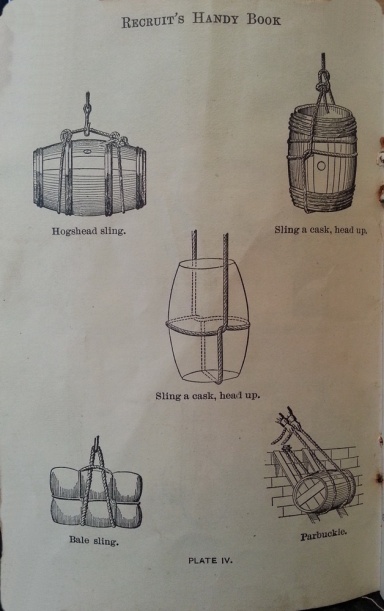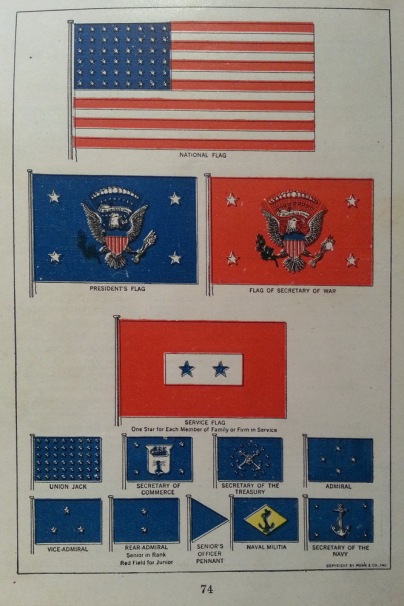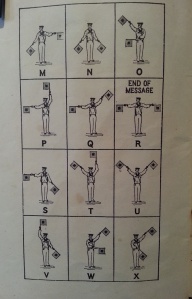Introduction
So you want to get involved with “living history”. Here is basic Information for new recruits and/or newbies to the naval service at the turn of the last century. The information provided is to assist in developing an accurate impression.
Achieving the “look” of the period
We who choose to interpret the lives of officers and enlisted men of the Navy and Marines of the 1890’s to 1920’s are products of our own time (and for some, products of other reenacted eras), it seems useful to provide some basic guidance on how to achieve the appropriate “look” of the men we portray specific to their time. The following is intended to address a few points on the physical appearance in order to heighten the interpreter’s overall impression.
Facial Hair
Facial hair continued to enjoy widespread popularity in the 1890s and into the teens. This was particularly true within the naval service, where facial hair was equated with masculinity. The single most common form of facial hair at the time of the Span-Am & Great War was the mustache. This was typically worn without any additional growth, the rest of the face being shaved. Lengths and shapes varied greatly, though two of the most popular styles were the handlebar or “walrus” mustache. With handlebars the rule was the longer, the better. Wax was applied to keep the mustache in good form, though this was most likely a cosmetic luxury dispensed with when at sea on ashore in a landing party where dust and mud unintentionally had the same effect. Handlebars — some grown to conspicuous lengths — were popular amongst all age levels and all classes of men, though younger men (perhaps by necessity) often gravitated toward a shorter style. Indeed, among the youngest cohorts who sported a one, a thin beginner mustache was typical, as evident from photographs. On a side note, it should be mentioned that the “pencil” mustache, made popular in the 1930s, was a style that had not yet become popular at the time. Most Marines were clean shaven, unless one of their lieutenants or captains wore one and could get permission.
Not as prevalent as a mustache, goatees and beards were also popular at the time. This is especially true among older men. Despite this, the appearance of goatees and beards can be found in the ranks through the entire war, albeit more often among the officers or the older reservists and territorials (the middle aged men).
Hair Style
Mens hairstyles of the period were typically well-kempt, with the hair being either parted on the side or middle, or being combed back with no part. The hair was often kept longer on top than on the sides and back. Sideburns were cut higher than modern standards with the hairline typically ending at a level equal to where the top of the ear joined the head (mutton chops or facial sideburns of any sort were a thing of the past). The same was also true of the back hairline, which was trimmed higher than even short-length modern hairlines. For styling, pomade was a commonly used product.
Regulations held that the hair on the sides and back of the head were to not exceed half an inch. Of course, circumstances did not always permit this and hair length would often be longer (though still kept to a reasonably short length). What we today refer to as a “high and tight” — the ubiquitous fashion of the military serviceman — originated in this period. Hand clippers allowed for the hair to be closely trimmed (usually to within a quarter to a half inch in length). The hair on top could be left longer, though usually not exceeding 3-4 inches. New recruits would have their entire heads clipped either prior to or upon reporting for service.
Taking into account the information discussed above, the following guidance can be gleaned by those who portray the Marine or Sailor of the Span-Am or Great War. Styles should be kept tidy, with care being paid to keep the sides and back to within 1 inch. The top can be kept longer. Sideburns should be avoided entirely. Facial hair, when grown, should also be well-kempt. Mustaches alone are highly encouraged. Goatees and even beards are also acceptable but should generally be kept relatively trimmed. Full beards in particular should generally be avoided by younger interpreters.
Thanks to the 151ème Régiment d’Infanterie de Ligne for permission to excerpt content.
Welcome to the Navy The Recruit’s Handy Book 1907 & 1913
The “Handy Book” series was prepared for men entering the naval service. First published in 1902, the books were small so they could be carried in the rear pocket as a ready reference. The Recruit’s Handy Book was a primer on what was to follow at induction and Boot Camp. The Handy Book provides the new recruit with the basics. It informs and also poses many questions about subject matter that a new recruit will need to learn about navy life: advantages, promotion, pay, life afloat, uniforms and their care, ship nomenclature, ground tackle, small boats, knots, bends, and splicing, customs and courtesies, basic drill, manual of arms, signaling. It is not exhaustive. You will need a copy of The BlueJacket’s Manual for detailed information. There are many sources online for free reading. We recommend that you purchase a real paper reprint or an original from 1917-’18. They were printed in great number during WW I and are reasonably priced on eBay, Amazon, and many used booksellers.
I hope this will provide you with a feel for the period and your first taste of what it was like to join the enlisted ranks in a new century, in a burgeoning navy filled with the possibilities of advancement and excitement.
Pay, Promotion and Rewards In The Navy.
1 . Recruits, as a rule, do not realize what the Navy offers in the way of (1) Promotions, (2) Pay, (3) Allowances, and (4) Advantages J These subjects will be explained in the order given.
‘2. Promotion cannot be expected at once. The recruit must be willing to begin at the bottom and work up. Just as in civil life, so in the Navy, he must ” learn his trade,” or prove his ability and worth before he can rise. Here it may be stated that a man’s conduct particularly as to ” liberty breaking ” and ” sobriety ” play a very important part in his chances for promotion. Promotion is more certain and rapid than in civil life, pay is absolutely sure, and in the case of sickness or disability the man is taken care of free of charge.
Before a man is promoted, he must pass an examination before a board of three officers in accordance with such regulations as the Bureau of Navigation prescribes. (General Orders, No. 63.) This is done to insure promotion of deserving and qualified men.
Remarks on Pay.
Men should remember that their pay is all “velvet” except that they must pay for their clothes, other than their original outfit. Clothes are sold to them at actual cost to the Government. Twenty cents a month is deducted from their pay for the hospital fund. They are furnished a ration which is more than ample to feed them. There is no board bill to pay. Medical attendance is free. In case of serious illness they are sent to a hospital where they are given the best of medical and surgical attention and nursing. If injured or incapacitated in the line of duty, they get a pension. In case of fatal accident, in the line of duty, while on the active list, their beneficiary receives immediately six months’ pay.
There are no such allowances in civil life.
It will be noted above that there are certain rewards in the way of pay, etc., for men who graduate from the different classes in the petty officers’ school of instruction. Proficiency in ordnance, torpedoes, engineering and electricity will ensure promotion; and men who have a special taste for clerical work are sent to the Yeoman’s School. And for the man who strives to be a good seaman, there is always promotion. In fact, there are many different ” trades ” in the Navy, and a man is usually assigned to the work for which he is best fitted.
Recruits should carefully consider the great rewards which the Navy offers them. They should not be discouraged in the beginning, nor leave the service before they know what they are doing. They should settle down to work and remember that good conduct and continuous service will always earn promotion, and that life in the Navy has many bright sides. A man who is easily discouraged, or who will not work or ” learn a trade,”‘ will never succeed at anything.
13. Enlisted men of the Navy regularly detailed by the commanding officer of a vessel as gun captains, except at secondary battery guns, shall receive, in addition to the pay of their respective ratings, $5 per month, which, in the case of men holding certificates as gun captains, or of graduation from the gun-captain class, petty officers’ school, shall include the $2 per month to which such certificates entitle them.
Instructors, etc., at Training Stations.
14. Chief petty officers detailed as instructors of apprentice seamen at naval stations who qualify as instructors by examination shall receive hereafter in addition to their pay the sum of $10 per month while so detailed, such pay to be considered extra pay for special duty.
15. Apprentice seamen detailed as apprentice chief petty officers, apprentice petty officers, first, second, or third class, in connection with the instruction of apprentice sea- men at naval stations, shall receive hereafter in addition to their pay the sum of $2.50, $2, $1.50, and $1 each per month, respectively, while so detailed, such pay to be considered extra pay for special duty.
Submarine Work.
16. All enlisted men of the Navy shall receive $5 per month in addition to their pay while serving on board of submarine vessels of the Navy.
17. After qualifying for submarine work men shall receive $1 additional pay for each day during any part of which they shall have been submerged in a submarine boat while under way, but such additional pay shall not exceed $15 in any one calendar month.
Navy Mail Clerks.
18. Enlisted men detailed as Navy Mail Clerks, in ac- cordance with the Act of May 27, 1908, receive, in addition to the pay of their rating, the following monthly compensation :
On ships whose complement is 650 or more. .$30
On receiving ships, $25
On those having 249 to 650, $25
On those having 124 to 250, $20
On those having 34 to 125 , $10
Enlisted men designated as Assistant Navy Mail Clerks shall receive $15 per month in addition to the pay of their rating.
Ship’s Tailors.
19. Any enlisted man of the Navy detailed to perform the duties of ” ship’s tailor ” on board a vessel having a complement of 600 men or more, exclusive of marines, shall receive $20 per month in addition to the monthly pay of his rating ; on vessels having a complement of from 300 to 600 men, exclusive of marines, $15 in addition to the monthly pay of his rating ; on vessels having a complement of from 100 to 300 men, exclusive of marines, $10 per month in addition to the monthly pay of his rating. Any enlisted man of the Navy detailed as ” tailor’s helper ” on board of a vessel having a complement of 600 men or more, exclusive of marines, shall receive $10 per month in addition to the monthly pay of his rating : Provided, That the total pay of an enlisted man detailed as ” ship’s tailor,” shall not exceed $50 per month, and of “tailor’s helper ” shall not exceed $40 per month.
It shall be the duty of men detailed as ship’s tailors or, tailor’s helper to alter, when necessary, without expense to the enlisted men of the Navy, all uniforms, caps, and clothing issued by the Supply Officer.
Seamen Gunners and Graduates of Schools.
20. Men who have successfully completed a prescribed course of instruction for seamen gunners or petty officers may be given, by the Bureau of Navigation, a certificate to that effect which shall entitle them to receive $2.20 per month in addition to the pay of the rating in which they are serving; such certificates to continue in force only during the enlistments in which the men were respectively graduated, unless renewed by re-enlistment for four years within four months from date of honorable discharge.
Men holding certificates as seamen gunners are entitled to the pay prescribed for said rating and are entitled to re-enlist at any time as such at the base rate of $26 per month ; but if given any other rating than that of seamen gunner, the holder of a seaman gunner’s certificate shall not receive additional pay therefor, unless in continuous service.
Extra Pay for Re-Enlistment.
21. To provide adequate compensation for trained men, the pay now prescribed for each rating in the Navy is hereby increased $5.50 per month during the second period of service and a further sum of $3.30 per month during each and every subsequent period of service: Provided, That only enlisted men who are citizens of the United States, and whose second and subsequent periods of service each follow next after service in the Navy that was terminated by reason of expiration of enlistment, shall receive the benefits of the increased pay named herein : Provided further, That in the cases of men who are or were finally discharged from the Navy by reason of expiration of enlistment, the first enlistment on or after November 27, 1906, shall be considered the second period of service which shall carry with it the in- creased pay provided by this law; except that men dis- charged on recommendations of boards of medical survey, shall, if they re-enter the service, be given credit for any previous periods of service in the Navy which were terminated by reason of expiration of enlistment.
Extra Pay for Good Conduct Medals.
22. See paragraphs 22-26 Advantages Offered Enlisted Men in the Navy.
Clothing Outfit and Rations.
23. All enlisted men of the Navy shall receive, on first enlistment, outfits amounting in value as follows : Samoans and such men of the messman branch as are not required to possess complete outfits, not to exceed $20 ; men of the insular force, not to exceed $30; all other enlisted men, not to exceed $60. Commanding officers shall direct which of the above amounts is to be allowed in each case of first enlistment ; the outfit for ” all other enlisted men ” to be issued in accordance with the provisions of the Uniform Regulations. Any man who is discharged during the first six months of a first enlistment for any cause other than disability incurred in the line of duty shall have checked against his accounts prior to discharge the cost of such portion of outfit allowed on first enlistment as he may have drawn.
24. An ample ration of food is furnished gratis to every enlisted man in the Navy.
Travel and Overtime Allowances.
25. Men enlisted within the continental limits of the United States and discharged by reason of expiration of enlistment or extended enlistment within three months be- fore the expiration thereof, at a place therein not the place of their enlistment, shall be furnished at the time of discharge, in lieu of transportation and subsistence, travel allowance of four cents per mile from the place of discharge to the place of enlistment.
14. There are many rewards for continuous service in the Navy :
15. A man who re-enlists within four months after being ‘ ” honorably discharged ” is given a continuous-service certificate and is allowed full pay during his four months’ leave. And every time he re-enlists under a continuous- service certificate his pay is increased $1.50 per month.
16. Men who hold ” continuous-service certificates are given the preference when it comes to promotion. -After 25 years’ service they may get shore duty at naval stations and receiving ships.
Conduct Records.
17. Every offence against regulations, committed by a man in the Navy, is recorded upon his “conduct record.” This “conduct record,” incorporated in his service record, is kept by the Executive Officer, and it follows a man from ship to ship as long as he remains in the Navy. He can never escape from it. A man with a bad record is naturally viewed with suspicion. It takes time for him to remove a bad impression, and his promotion, advancement, and privileges necessarily depend upon his conduct and his faithfulness.
18. Men should appreciate the advantage of a “clear record.” When they blacken it they are injuring them- selves nobody else is affected.
19. The ” conduct record ” of a man, with his marks in ” proficiency ,” ” seamanship,” “ordnance” marksmanship at great guns and small arms,” ” signals,” ” obedience,” and ” sobriety ” is the first thing that is considered when he comes up for promotion. It is the same in the Navy as in civil life the man who is decent, honest, truthful, respectful, obedient, and industrious always gets the first recommendation for promotion, provided he has the necessary qualifications.










